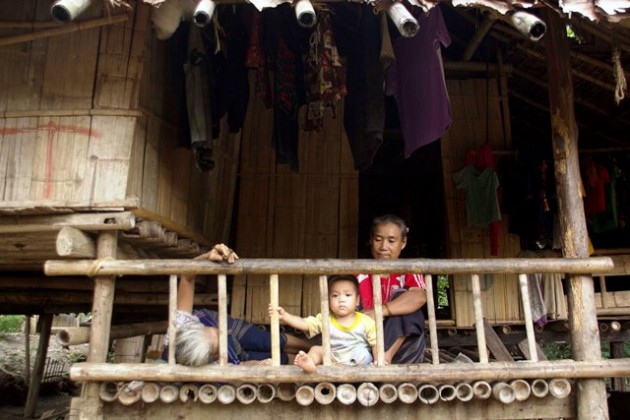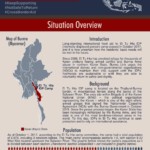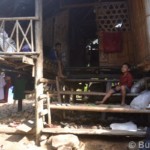Kaelyn Lynch/Karen News | November 21, 2017
Refugees from Burma are finding it difficult to stay, difficult to go home.
In Thailand, funding cuts to refugee camps have left over 100,000 displaced people from Burma to choose between trying to survive in deteriorating conditions and returning to a country not ready to receive them.
The refugees are spread throughout 9 camps perched on Thailand’s southwest border with Burma. The vast majority are from the Karen ethnic group, victims of a 6-decade long conflict with the Burmese government—the world’s longest civil war.
Many have called the claustrophobic collection of stilted bamboo huts home for over 30 years. Others born in the camps have known only a limited life outside of the barbed-wire fences that confine them. Unable to legally leave the camps to work, refugees have survived for most of the last three decades on the charity of international donors. But now, that aid has begun to dry up.
Funding cuts to organizations operating on the Thai-Burma border have been an ongoing process for the past seven years, beginning in 2010 with Burma’s shaky transition toward democracy. With an unprecedented number of displaced people—some 65 million worldwide—donors have turned their attention to more visible crises. Some have shifted their focus to the other side of the border, seeking to work officially with the Burmese government.
“It’s always a challenge to raise funds for food aid in a situation of protracted displacement where the needs are chronic but not life-threatening,” says Duncan McArthur, Myanmar Program Director at The Border Consortium. For twenty plus years, TBC has been the sole provider of food and shelter assistance to all nine refugee camps. They’ve seen their funding drop by nearly 50% between 2012 and 2016, a trend they expect to continue.
To cope, TBC has scaled back “non-core” activities and cut staff numbers and stipends, many of whom come from the refugee community. In addition to decreased employment opportunities, camps have seen losses in the quality of medical care and education, including clinic closures and rising school fees. By far the most pressing concern amongst refugees, however, is ration reductions.
Refugees in the camps rely heavily on a monthly ration of rice, yellow split peas, fortified flour, fish paste, and cooking oil. Since 2010, standard adult rations have dropped from 15 kilograms of rice per person to 9 kilograms, from 7.5 kilograms to 6 kilograms for children. In 2012, TBC restricted their food distribution, adjusting rations based on whether a family is classified as “most vulnerable,” “vulnerable,” “standard,” or “self-reliant.” Self-reliant households—1% of the camps’ population—no longer receive rations, while households determined to be vulnerable are given extra support. Still, those classified as most vulnerable receive only 13.5 kilograms of rice, below the standard 15 kilograms received by all refugees in 2010.
In 2012, when standard rice rations were 12 kilograms, TBC recognized that at 1,640 kilocalories per person per day, rations fell 22% below the 2,100 kilocalorie minimum recommended by SPHERE, which sets standards for humanitarian response.
This article originally appeared on Karen News on November 21, 2017



![‘The Burma Army Killed Him [Saw O Moo] – At Least the Government or the Army Should Commit to Not Do This Again’: Paul Sein Twa, Executive Director of KESAN](https://www.burmalink.org/wp-content/uploads/2018/05/Saw-O-Moo-commemoration-Paul-Sein-Twa-speaking-2-150x150.jpg)




[…] Sharing: Burma Link | […]